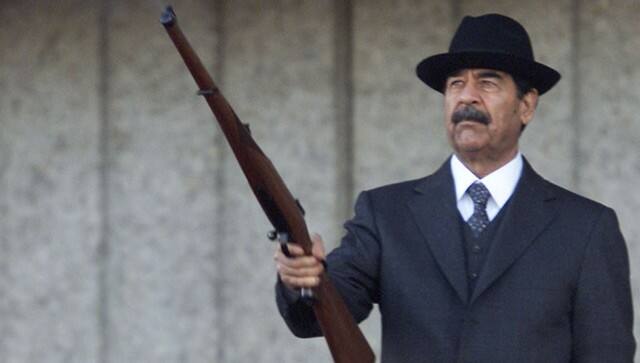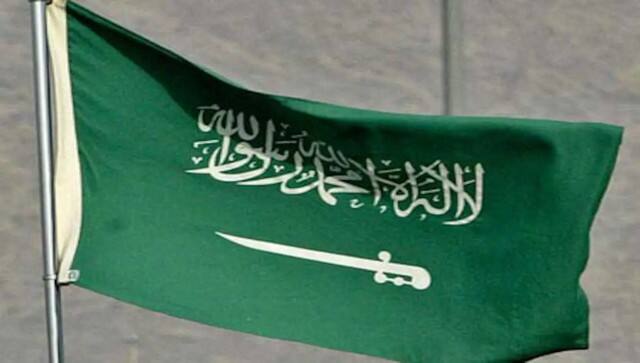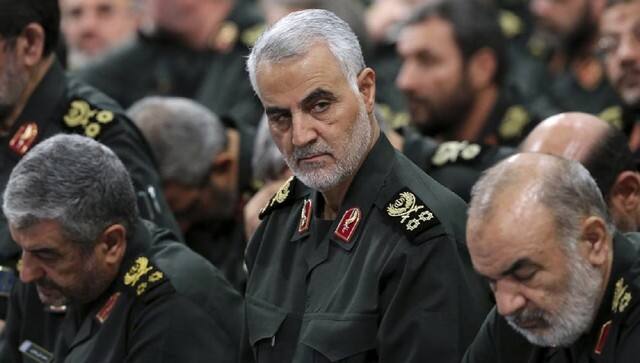On Thursday, Iran and Saudi Arabia held high-level talks for the first time since 2016. The meeting between the two West Asian rivals occurred in China – which brokered a historic detente in March. Iranian foreign minister Hossein Amirabdollahian laid out details of Thursday’s agreement in a tweet, after his talks with Saudi counterpart Prince Faisal bin Farhan Al Saud. The minister wrote that Thursday marked the beginning of “official diplomatic relations … economic and commercial cooperation, the reopening of embassies and consulates general, and the emphasis on stability, stable security and development of the region.” Amirabdollahian said that the issues are “agreed upon and on the common agenda.” The official Iranian news agency, IRNA, said that in addition to reopening embassies in the two capitals, diplomatic missions would start operating in two other major cities — Mashhad in Iran and Jeddah in Saudi Arabia. The report said both sides also agreed to study the prospects of resuming flights and official and private visits between the two nations, in addition to how to facilitate the visa process for their people. Chinese Foreign Ministry spokesperson Mao Ning said the two foreign ministers signed a joint statement and expressed their determination to improve ties in line with their talks in Beijing last month. Let’s take a closer look at the decades-old rivalry and the significance of the talks: Discord begins The seeds of discord were planted during the Iranian Revolution. The Sunni royals looked on in horror as Shah Mohammed Reza Pahlavi was dethroned by Shi’ite Muslim clerics. Sunni governments across the globe, including Riyadh, accused the Shi’ite Muslim clerics of wanting to ‘export’ their revolution.
The Iraq-Iran war, which kicked off in 1980, made matters worse.
Saudi Arabia provided financial support to dictator Saddam Hussein in a war in which Baghdad deployed chemical weapons. The war, which lasted eight long years, left many Iranians enraged. [caption id=“attachment_12418182” align=“alignnone” width=“640”] File image of Saddam Hussein. Reuters[/caption] Then came the attack on pilgrims in Mecca in July 1987 when Saudi security forces cracked down on an unauthorised anti-US protest by Iranian pilgrims. More than 400 people were killed, most of them Iranians. That led to angry demonstrators ransacking the Saudi embassy in Tehran and setting ablaze Kuwait’s embassy. A Saudi diplomat died after falling out of a window. Riyadh accused Tehran of delaying his transfer to a hospital in Saudi Arabia. In April 1988, King Fahd broke off diplomatic relations with Tehran. Better times return It was only in 1991 that relations were restored and Iranian pilgrims returned to Saudi holy places. In December 1997, Saudi Crown Prince Abdullah, visiting Iran for an Islamic summit, became the highest-ranking Saudi to do so since the Islamic Revolution. In 2001, then Saudi King Fahd congratulated Iran’s Mohammad Khatami on his election victory. Fahd said it was an endorsement of Khatami’s reformist policy. Khatami had worked for rapprochement with Riyadh after his first landslide win in 1997. Khatami then visited Saudi Arabia, the first such trip since 1979. In April 2001, the two countries made a security pact. The 2003 invasion of Iraq by the US saw Saddam removed. It also resulted in Iraq’s Shi’ite majority being empowered and resulted in a shift in its political alignment toward Iran. Tensions rise again The 2005 assassination of Lebanon’s Rafik al-Hariri, a close Saudi ally, set the stage for a power struggle in Beirut. The conflict pitted Iran and its allies on the one hand, including Syria, and US-allied, Sunni-led Gulf Arab states on the other. Lebanon fell increasingly under the sway of the heavily armed, Iran-backed Lebanese group Hezbollah. The 2006 war between Israel and Hezbollah hardened Saudi suspicions that Tehran was creating new regional alliances threatening Saudi interests.
File image of Saddam Hussein. Reuters[/caption] Then came the attack on pilgrims in Mecca in July 1987 when Saudi security forces cracked down on an unauthorised anti-US protest by Iranian pilgrims. More than 400 people were killed, most of them Iranians. That led to angry demonstrators ransacking the Saudi embassy in Tehran and setting ablaze Kuwait’s embassy. A Saudi diplomat died after falling out of a window. Riyadh accused Tehran of delaying his transfer to a hospital in Saudi Arabia. In April 1988, King Fahd broke off diplomatic relations with Tehran. Better times return It was only in 1991 that relations were restored and Iranian pilgrims returned to Saudi holy places. In December 1997, Saudi Crown Prince Abdullah, visiting Iran for an Islamic summit, became the highest-ranking Saudi to do so since the Islamic Revolution. In 2001, then Saudi King Fahd congratulated Iran’s Mohammad Khatami on his election victory. Fahd said it was an endorsement of Khatami’s reformist policy. Khatami had worked for rapprochement with Riyadh after his first landslide win in 1997. Khatami then visited Saudi Arabia, the first such trip since 1979. In April 2001, the two countries made a security pact. The 2003 invasion of Iraq by the US saw Saddam removed. It also resulted in Iraq’s Shi’ite majority being empowered and resulted in a shift in its political alignment toward Iran. Tensions rise again The 2005 assassination of Lebanon’s Rafik al-Hariri, a close Saudi ally, set the stage for a power struggle in Beirut. The conflict pitted Iran and its allies on the one hand, including Syria, and US-allied, Sunni-led Gulf Arab states on the other. Lebanon fell increasingly under the sway of the heavily armed, Iran-backed Lebanese group Hezbollah. The 2006 war between Israel and Hezbollah hardened Saudi suspicions that Tehran was creating new regional alliances threatening Saudi interests.
Worse was to come.
Iran’s disputed nuclear energy programme deepened Saudi fears that Tehran, under Khatami’s hardline nationalist successor Mahmoud Ahmadinejad, is bent on dominating the Gulf region. In 2008, a Wikileaks cable quoted Saudi Arabia’s King Abdullah as telling his diplomats that he wanted the US to “cut off the head of the snake”. Arab spring kicks off Then, the Arab spring began in 2011. Saudi Arabia again looked on in horror as pro-democracy uprisings moved eastward from Tunisia and Egypt to the Gulf. [caption id=“attachment_12418132” align=“alignnone” width=“640”] Saudi Arabia’s flag.[/caption] Saudi Arabia saw protests in Bahrains a red line because of fears the island’s Shi’ite majority would take power and ally with Iran. Saudi troops helped put down Bahraini Shi’ite unrest at the request of Bahrain’s Sunni royal family. Saudi Arabia accused some Shi’ites in its Eastern Province of cooperating with a foreign state – meaning Iran – to sow dissent, after clashes between police and Shi’ites. The United States claimed it has uncovered an Iranian plot to assassinate the Saudi ambassador to Washington. Riyadh said the evidence was overwhelming and Tehran would pay a price. Iran rejected the report as a fabrication aimed at driving a wedge between Tehran and Saudi Arabia. Syrian war, Iran thaw, nuclear talks Moderate Hassan Rouhani is elected Iranian president in June 2013.
Saudi Arabia’s flag.[/caption] Saudi Arabia saw protests in Bahrains a red line because of fears the island’s Shi’ite majority would take power and ally with Iran. Saudi troops helped put down Bahraini Shi’ite unrest at the request of Bahrain’s Sunni royal family. Saudi Arabia accused some Shi’ites in its Eastern Province of cooperating with a foreign state – meaning Iran – to sow dissent, after clashes between police and Shi’ites. The United States claimed it has uncovered an Iranian plot to assassinate the Saudi ambassador to Washington. Riyadh said the evidence was overwhelming and Tehran would pay a price. Iran rejected the report as a fabrication aimed at driving a wedge between Tehran and Saudi Arabia. Syrian war, Iran thaw, nuclear talks Moderate Hassan Rouhani is elected Iranian president in June 2013.
Rouhani turned Iran’s hitherto confrontational foreign policy in a conciliatory direction.
Iran struck an interim deal with big powers in November to limit its nuclear activity. Relations between Iran and most Gulf Arab neighbours improved. The Saudi-led Gulf Cooperation Council called in December for good neighbourly relations with Iran based on “non-interference in internal affairs”. But Iranian-Saudi ties remained icy, with their regional power struggle reflected in the Syrian civil war. Riyadh remained a leading supporter of rebels fighting Syrian President Bashar al-Assad – a close ally of Tehran. In 2015, Saudi Arabia intervened in Yemen at the head of a Western-backed coalition against the Houthi movement after the Iran-aligned group ousted the internationally recognised government from power in the capital, Sanaa. Ties deteriorate again Saudi Arabia executed nearly 50 people including prominent Shi’ite cleric Nimr al-Nimr on 2 January, 2016. Protesters in Tehran stormed the Saudi embassy. Shi’ite Iran’s top leader, Ayatollah Ali Khamenei, vowed “divine vengeance” for Nimr’s execution. A day later, Saudi Arabia again cut ties with Iran. Iran accused Saudi Arabia of air strikes on its embassy in Yemen on 7 January – which Saudi officials dismissed as propaganda.
In May 2016, Iran banned its pilgrims from attending the annual Muslim haj pilgrimage.
It blamed Saudi Arabia for “sabotage” and failing to guarantee the safety of pilgrims. 2019 to today In September 2019, Saudi Arabia blamed Iran for attacks on its oil installations that knocked out half of the kingdom’s supply. Iran denied involvement and Yemen’s Iran-aligned Houthi group claimed responsibility for the attacks. In January 2020, Qassem Soleimani, the Iranian military commander, was killed in a US drone strike in Baghdad. [caption id=“attachment_12418202” align=“alignnone” width=“640”] Quds Force commander Gen. Qassam Soleimani was killed in the attack. Image: AP.[/caption] In 2021, Iran and Saudi Arabia held their first direct talks since the rupture, with Baghdad playing the host. Four rounds of talks were held, mostly mediated by Iraq and Oman, between April 2021 and September 2022. Iran pulled out of the talks on 13 March, 2022, ahead of a planned fifth round. That came a day after mass executions in Saudi Arabia that activists said included 41 Shi’ite Muslims.
Quds Force commander Gen. Qassam Soleimani was killed in the attack. Image: AP.[/caption] In 2021, Iran and Saudi Arabia held their first direct talks since the rupture, with Baghdad playing the host. Four rounds of talks were held, mostly mediated by Iraq and Oman, between April 2021 and September 2022. Iran pulled out of the talks on 13 March, 2022, ahead of a planned fifth round. That came a day after mass executions in Saudi Arabia that activists said included 41 Shi’ite Muslims.
In April 2022, Iran and Saudi Arabia held a fifth round of talks.
Impact Shorts
More ShortsIn October, the top adviser to Iran’s Khamenei called for reopening of Saudi, Iranian embassies. Chinese president Xi Jinping visited Saudi Arabia in December and held talks with Crown Prince Mohammed bin Salman. Iranian’s Ebrahim Raisi visited China in February 2023 to meet Xi. The next month, Iran and Saudi Arabia shocked many by agreeing to re-establish relations in a deal brokered by China. Significance of talks A piece in BBC noted two lessons for Saudi Arabia – that its leaders have come to terms with the fact that it is unlikely to ever defeat Iran and that it cannot depend on America. “…the Saudi-Iran agreement is the latest sign that Riyadh is forging its own path, making new alliances, even if it is with countries the US views as strategic threats,” the piece noted. Experts said the agreement if confirmed would represent a new step toward reconciliation after seven years of tension. The rapprochement, which was initiated last month, lowers the chance of armed conflict between the Mideast rivals – both directly and in proxy conflicts around the region.
For China, the talks represent a major diplomatic victory.
This, as Gulf Arab states perceive the United States slowly pulling back from the region. [caption id=“attachment_12362612” align=“alignnone” width=“640”] Chinese president Xi Jinping. Reuters[/caption] A piece in Business Insider noted that the talks put paid to long-held expectations from Washington in the region and signals a paradigm shift from Beijing. “By mediating the Saudi-Iran deal, China has demonstrated its ability to play a constructive role in resolving conflicts impartially rather than relying on arms sales to keep nations in its corner, as the US has done for years,” the piece noted. The piece added that Washington, which remains the largest seller of weapons to the region, has spent decades getting itself involved in conflicts. “The Saudi-Iran normalisation deal is an end of one era of US-primacy in the Middle East and the start of a new multi-polar reality,” the piece added. The piece concluded that Washington had only two options left – get on the diplomacy bandwagon or get left behind. Kristian Coates Ulrichsen, a Middle East fellow at Rice University’s Baker Institute for Public Policy, told Middle East Eye the Saudi’s had followed ex-president Donald Trump’s lead. “Donald Trump said this was an attack on Saudi Arabia not on us. He was drawing a distinction between US interests and their interests,” Ulrichsen was quoted as saying. “You saw the Saudis suddenly realising that they had to adopt a set of policies that reflected their own interests,” he added. With inputs from agencies Read all the
Latest News
,
Trending News
,
Cricket News
,
Bollywood News
, India News
and
Entertainment News
here. Follow us on
Facebook
,
Twitter
and
Instagram
.
Chinese president Xi Jinping. Reuters[/caption] A piece in Business Insider noted that the talks put paid to long-held expectations from Washington in the region and signals a paradigm shift from Beijing. “By mediating the Saudi-Iran deal, China has demonstrated its ability to play a constructive role in resolving conflicts impartially rather than relying on arms sales to keep nations in its corner, as the US has done for years,” the piece noted. The piece added that Washington, which remains the largest seller of weapons to the region, has spent decades getting itself involved in conflicts. “The Saudi-Iran normalisation deal is an end of one era of US-primacy in the Middle East and the start of a new multi-polar reality,” the piece added. The piece concluded that Washington had only two options left – get on the diplomacy bandwagon or get left behind. Kristian Coates Ulrichsen, a Middle East fellow at Rice University’s Baker Institute for Public Policy, told Middle East Eye the Saudi’s had followed ex-president Donald Trump’s lead. “Donald Trump said this was an attack on Saudi Arabia not on us. He was drawing a distinction between US interests and their interests,” Ulrichsen was quoted as saying. “You saw the Saudis suddenly realising that they had to adopt a set of policies that reflected their own interests,” he added. With inputs from agencies Read all the
Latest News
,
Trending News
,
Cricket News
,
Bollywood News
, India News
and
Entertainment News
here. Follow us on
Facebook
,
Twitter
and
Instagram
.